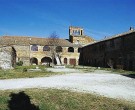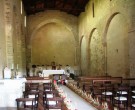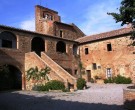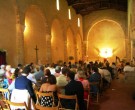> Home > What to visit > Churches and Monasteries

Badia Ardenga Montalcino
CHURCHES AND MONASTERIES
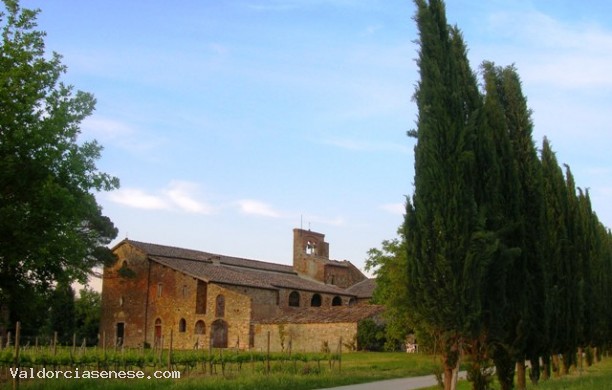
PHONE NUMBERS AND TIMES
Badia Ardenga
Business card (vCard)
The history of Badia Ardenga has its roots in the Middle Ages when, in the 11th century, the Ardenga Monastery was founded by a count of the Ranieri family of French origin.
The Monastery was partly destroyed, following the wars between cities that characterized the medieval period of these areas of southern Tuscany.
In the Romanesque Church of S. Andrea, integrated into the abbey complex, some architectural elements of the time have been found, but the almost complete discovery of an ancient crypt has confirmed its dating. It is a crypt with seven naves, two of which occupy the entire width of the Church.
In the vaults there are traces of a decoration consisting of ancient floral pictorial motifs, perhaps the only ones existing in the Sienese area. Very Interesting: the fourteenth-century bell gable, the columns bent towards the outside of the church.
Even more ancient testimonies are the shelves depicting heads of animals, placed to adorn the travertine portal and those that support the coat of arms on the facade of the Church.
Relevant works from Badia Ardenga and preserved in the Pinacoteca di Siena are: the Romanesque Paliotto, the first painting dated (1215) by the Sienese school; the tablets "Stories of the Passion of Christ", attributed to Giudo da Siena (1275-1280).
The abbey was suppressed in 1464 by Pope Pius II, for reasons unknown to date, by issuing a bull nemanata from Petriolo where he was to be treated with the famous thermal waters.
Legend has it that the friars, before Pope Pius II deprived them of their possessions, hid a bell entirely cast in gold.
The assets of the suppressed Badia were divided into three parts, one of which was assigned to the new Abbadia Ardenga given in commendation to the Tuti family of Siena, the other two used for the construction of the cathedral of Montalcino and the financing of a crusade.
The Tuti family exercised their power over the new Abbey until the 17th century; the last of the family, the abbot Fulvio Tuti. When the Tuti were extinct, the Abbey passed to the Marsili and in the first decades of the 1700s to Cardinal Patrizi.
In 1783 the Grand Duke Leopold I passed all the remaining assets and jurisdiction over the Abbadia and its territories to the Diocese of Montalcino. Later it was transferred as a parish to the Diocese of Siena.
STAY NEARBY
Badia Ardenga - Casa Vacanze
MONTALCINO
Abbadia Ardenga è un'antica abbazia dei monaci Vallombrosani (fu fondata nell'XI se...CASTELLO BANFI - IL BORGO
MONTALCINO
...TENUTA CAPARZO
MONTALCINO
In Val d'Orcia, just a few kilometres from Montalcino, in a splendid position with great v...DINING & ENTERTAINMENT NEARBY
Teatro degli Astrusi
MONTALCINO
Nel 1600 nasce l’Accademia degli Astrusi con un suo Teatro chiamato appunto Teatro d...ADLER THERMAE Spa Resort
SAN QUIRICO D'ORCIA
Set amidst important cultural towns like Pienza, Montalcino and Montepulciano, the Adler T...Palazzo Piccolomini
PIENZA
Questo palazzo viene impropriamente classificato come teatro perchè nel loggiato ve...



